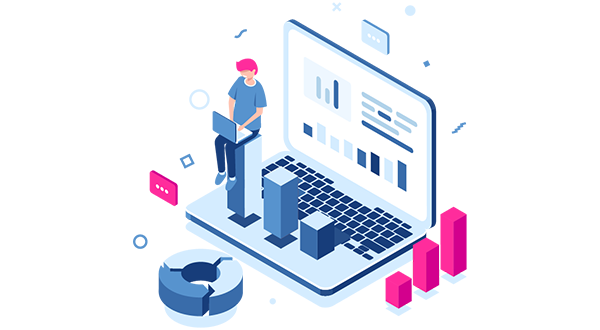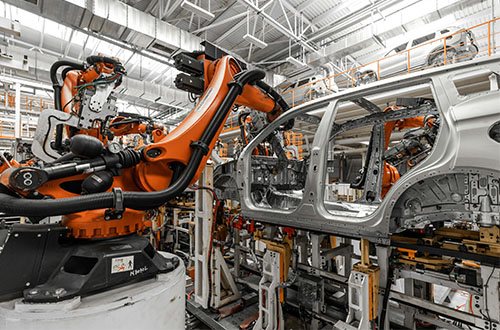

AI-Augmented Legacy Code Analysis
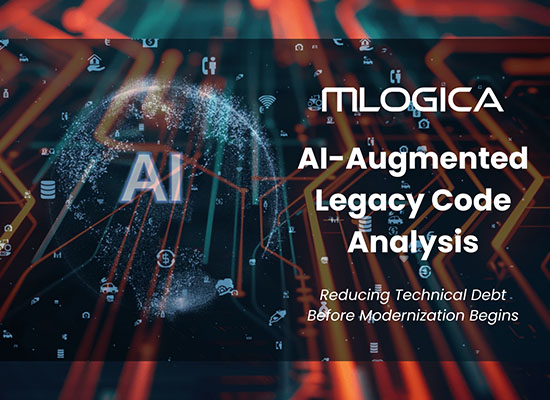
The mLogica Migration Team
Reducing Technical Debt Before Modernization Begins
The Hidden Burden of Legacy Systems
For decades, mission-critical platforms written in COBOL, PL/1, and Assembler have powered the operations of industries as diverse as banking, healthcare, and federal governance. These systems, while robust and time-tested, conceal a hidden burden in the form of accumulated technical debt. Over the years, quick fixes, ad-hoc patches, and reliance on dwindling pools of specialists have compounded this debt. It often remains invisible until modernization projects begin, at which point the debt translates into spiraling costs and schedule disruptions.
Before modernization can succeed, organizations must first identify and
mitigate these hidden risks. Artificial Intelligence now makes that possible
by providing precise, scalable analysis of legacy codebases.
Why Legacy Environments Resist Change
The underlying problem begins with the structural nature of legacy environments. Unlike modern development frameworks that employ rigorous version control and automated pipelines, many legacy applications grew organically, without systematic oversight. COBOL systems in particular often exist in multiple iterations across different sites, each slightly altered to meet unique business needs. Without centralized version management, inconsistencies proliferate, and organizations lose sight of the “single source of truth.” When teams attempt to modernize such codebases, the absence of reliable history complicates timelines and inflates budgets.
Lost Documentation and Vanishing Expertise
An equally pressing challenge is the lack of accessible documentation. Legacy code is notorious for depending on institutional memory, often carried only by senior programmers who built or maintained the systems decades ago. As these individuals retire or leave the workforce, their knowledge evaporates, leaving organizations with mission-critical software but no authoritative explanation of its inner workings. What remains is functional but opaque code that resists interpretation. In this environment, even seemingly small updates become risky endeavors, because hidden dependencies, embedded business logic, and unrecorded system integrations can trigger downstream failures.
LIBER*DAHLIA: Making the Invisible Visible
To overcome these challenges, enterprises are increasingly turning to mLogica’s LIBER*DAHLIA solution. This solution delivers a comprehensive inventory of applications, a clear map of interdependencies, and automated scoring of technical debt.
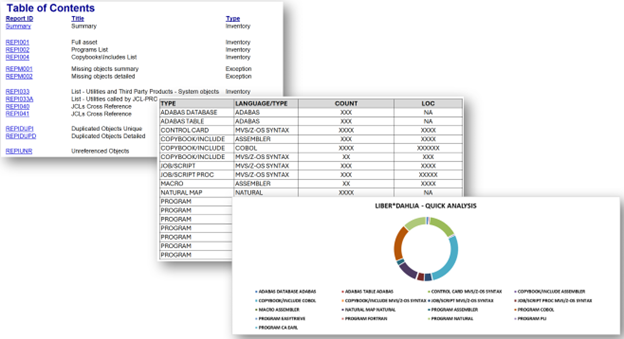
By exposing the true condition of legacy systems, LIBER*DAHLIA transforms what was once guesswork into a quantifiable and prioritized modernization roadmap. Decisions about sequencing, resourcing, and risk mitigation can be anchored in data rather than assumptions.
A Federal Agency’s Transformation Story
The practical impact of this approach is already visible.
Consider the experience of a federal agency tasked with modernizing hundreds of legacy applications. Traditionally, the initial analysis would have consumed more than six months of manual code reviews, cross-checking undocumented business processes, and reconciling conflicting program versions.
This acceleration not only reduced project costs but also enabled the agency to deliver modernized systems to stakeholders months ahead of schedule, improving both efficiency and service quality!
By automated documentation through LIBER*DAHLIA and deploying AI-driven analysis, the agency reduced this preparatory phase by nearly four months. What once demanded painstaking effort was replaced by rapid, LIBER*DAHLIA and AI-generated insights.
Why Addressing Technical Debt First Matters
The lesson from the above example is straightforward: addressing technical debt at the outset is not optional, it is essential. Ignoring it leads to downstream complications that are far more expensive to fix later. For example, unresolved dependencies discovered mid-migration can necessitate complete re-engineering or system rollbacks.
Hidden business rules, if lost during transformation, can expose organizations to regulatory or operational risks. By leveraging mLogica’s AI-powered technical debt analysis in the preliminary stages, enterprises prevent these downstream failures and ensure that modernization investments are aligned with long-term value creation.
GenAI as the Multiplier
AI takes this analysis by LIBER*DAHLIA further by combining deep code parsing with automated knowledge extraction. GenAI-driven systems can ingest millions of lines of COBOL, PL/1, or other legacy languages and output clear, structured explanations. These explanations translate complex procedural logic into human-readable narratives, enabling both IT leaders and business stakeholders to understand workflows, dependencies, and business rules with unprecedented clarity.
- From Obscurity to Clarity
Rather than presenting cryptic code blocks, AI can generate inline commentary, annotations, and contextual documentation. For example, a COBOL routine managing loan approvals can be automatically explained in business terms, highlighting conditions, data flows, and decision logic, bridging the gap between developers and domain experts.
- AI-Generated Annotation
“This logic approves loans greater than $50,000 only if the applicant’s credit score is at least 700; otherwise, the request is flagged for manual review.” This transformation turns decades-old procedural code into actionable knowledge. - From Monoliths to Modules
GenAI can also identify natural boundaries within monolithic programs, such as data validation, transaction posting, or reporting functions. By isolating these logical domains, AI can enable modularization, breaking a massive system into manageable components. These modules can then be modernized in phases, aligning with agile practices and minimizing risk.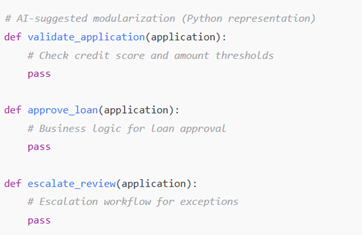
Here, GenAI reframes legacy routines into modular Python functions, illustrating how business logic can be re-implemented in modern languages and architectures.
- The Transformation Advantage
With AI, technical debt is no longer a vague burden, it becomes a quantifiable, documentable, and modularized challenge. Executives gain a transparent roadmap: what can be automated, what must be refactored, and where phased modernization can deliver immediate ROI. This makes modernization faster, less risky, and directly aligned with enterprise agility goals.
mLogica’s Vision for Modernization
At mLogica, we regard AI-augmented code analysis as foundational to digital transformation. Our modernization practice can integrate LIBER*DAHLIA with next-generation GenAI solutions that generate commentary, documentation, and modular structures at scale. This holistic approach gives clients a clear, accurate picture of their legacy environments before they commit resources to migration or re-engineering.
We believe that modernization should not begin with assumptions
but with clarity, a clarity that turns uncertainty and complexity into
actionable insight.
Bridging the Past to the Future
mLogica’s broader vision is to liberate organizations from the constraints of outdated systems while minimizing cost and risk.
AI does not replace the expertise and experience of architects and developers but serves as a force multiplier. It dramatically reduces manual effort (thereby human errors), eliminates ambiguity, and brings rigor to decision-making. In effect, AI bridges the gap between decades-old programming languages and modern cloud-native environments by analyzing legacy codebases (e.g., COBOL, Assembler) on mainframes, mapping their logic and dependencies, enabling enterprises to modernize at the speed of innovation.
From Hidden Risk to Measurable Priority: The Technical Debt Imperative
For executives and technology leaders, the imperative is clear: do not embark on modernization without first confronting technical debt. AI has made it possible to quantify, document, and modularize legacy code before transformation begins. Addressing these issues early ensures smoother migrations, lower costs, and faster value delivery. Technical debt in legacy systems may be inevitable, but it is no longer invisible. With AI, it becomes measurable, manageable, and solvable.
Modernize Now with Confidence, Speed, and Precision
If your organization is planning a transformation, now is the moment to act. Waiting only increases costs and compounds risks. By engaging with mLogica today, you can access a technical debt assessment tailored to your environment.
This assessment reveals hidden risks, clarifies the true scope of your modernization, and provides a roadmap built on data rather than assumption. The organizations that thrive in the digital era will be those that modernize with clarity, speed, and precision, qualities that mLogica delivers as standard.


